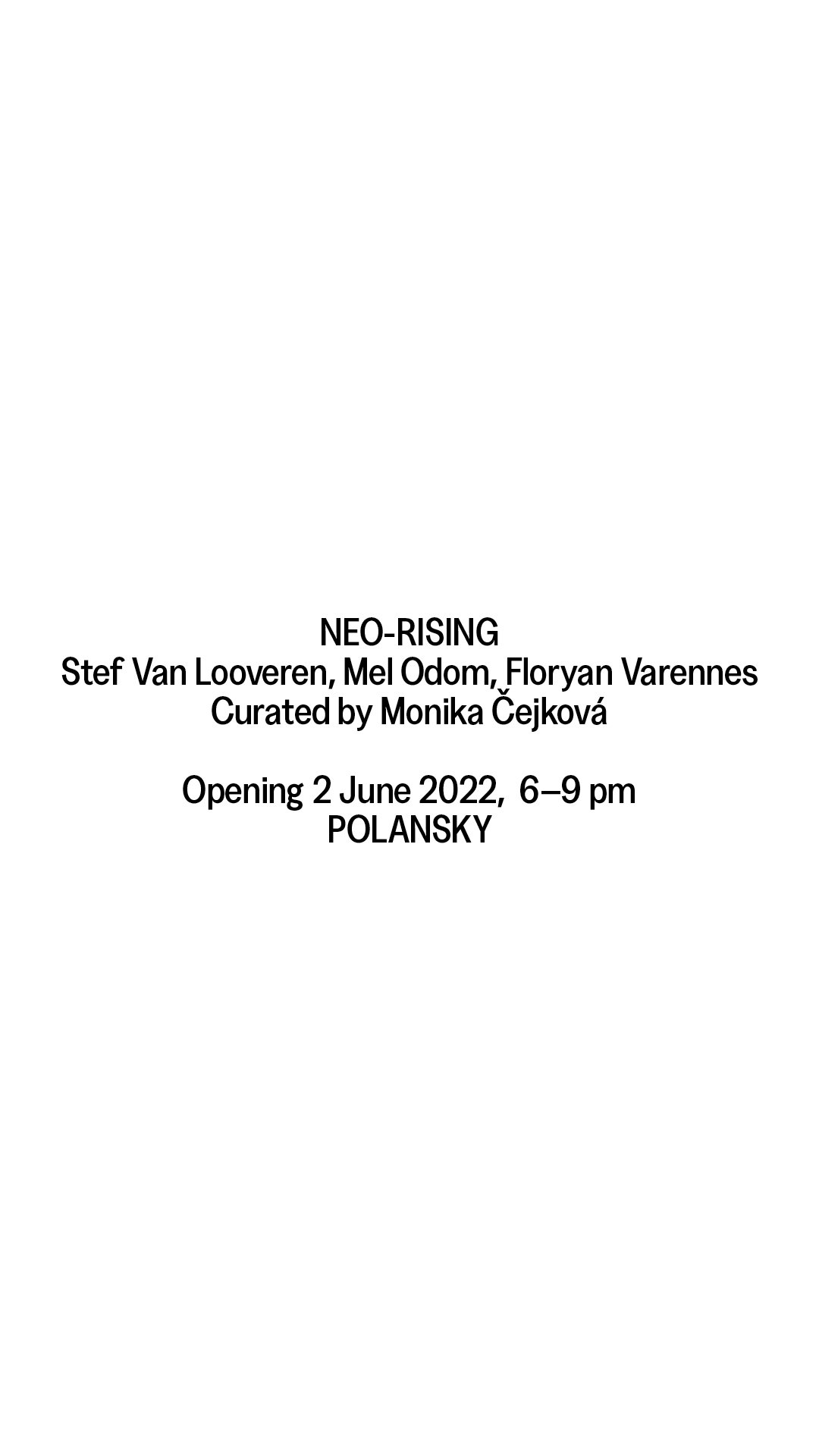Neo-rising
Stef Van Looveren, Mel Odom, Floryan Varennes
Polansky Gallery, Prague, Czech Republic
03.06.–16.07. 2022
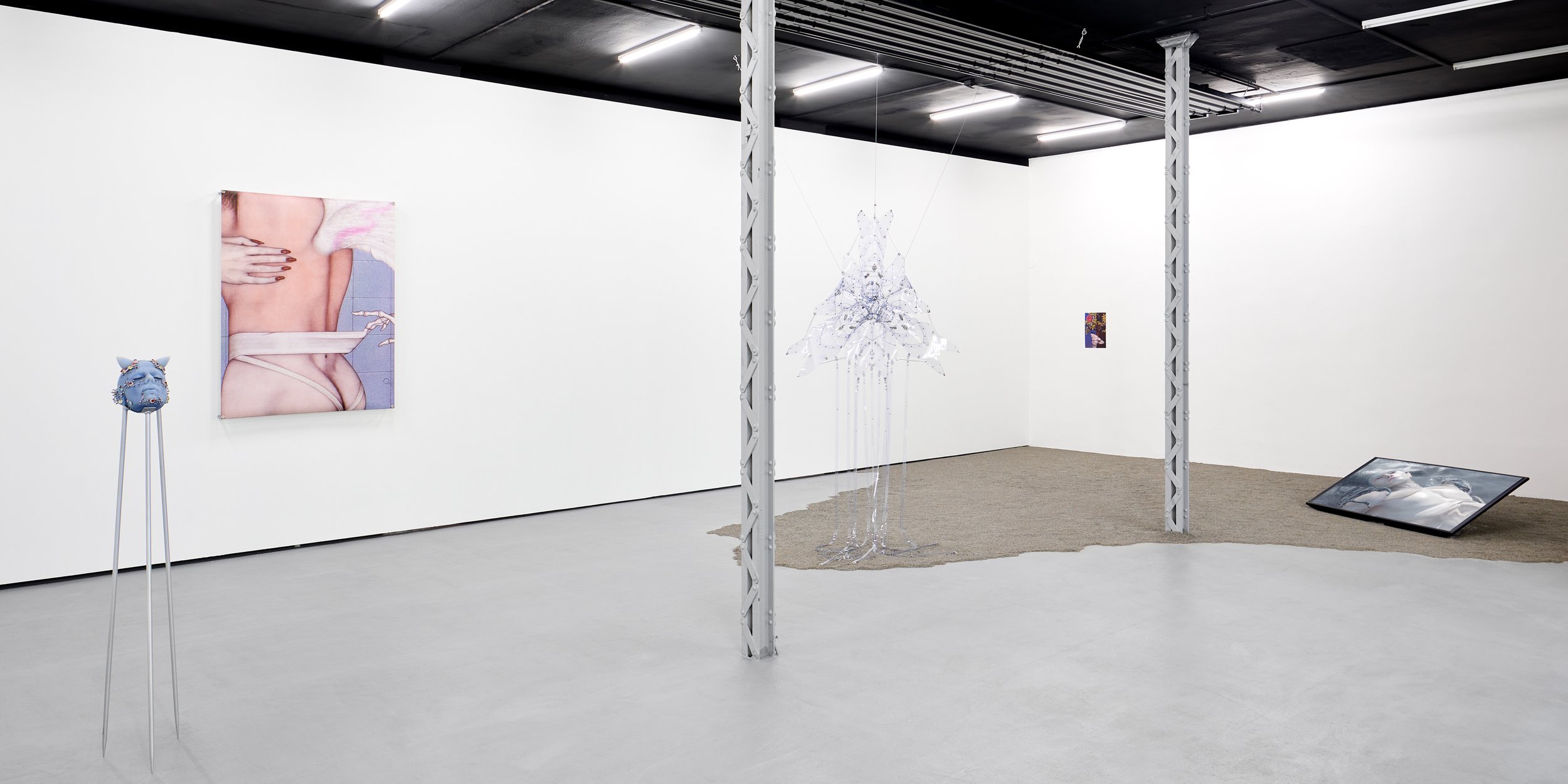
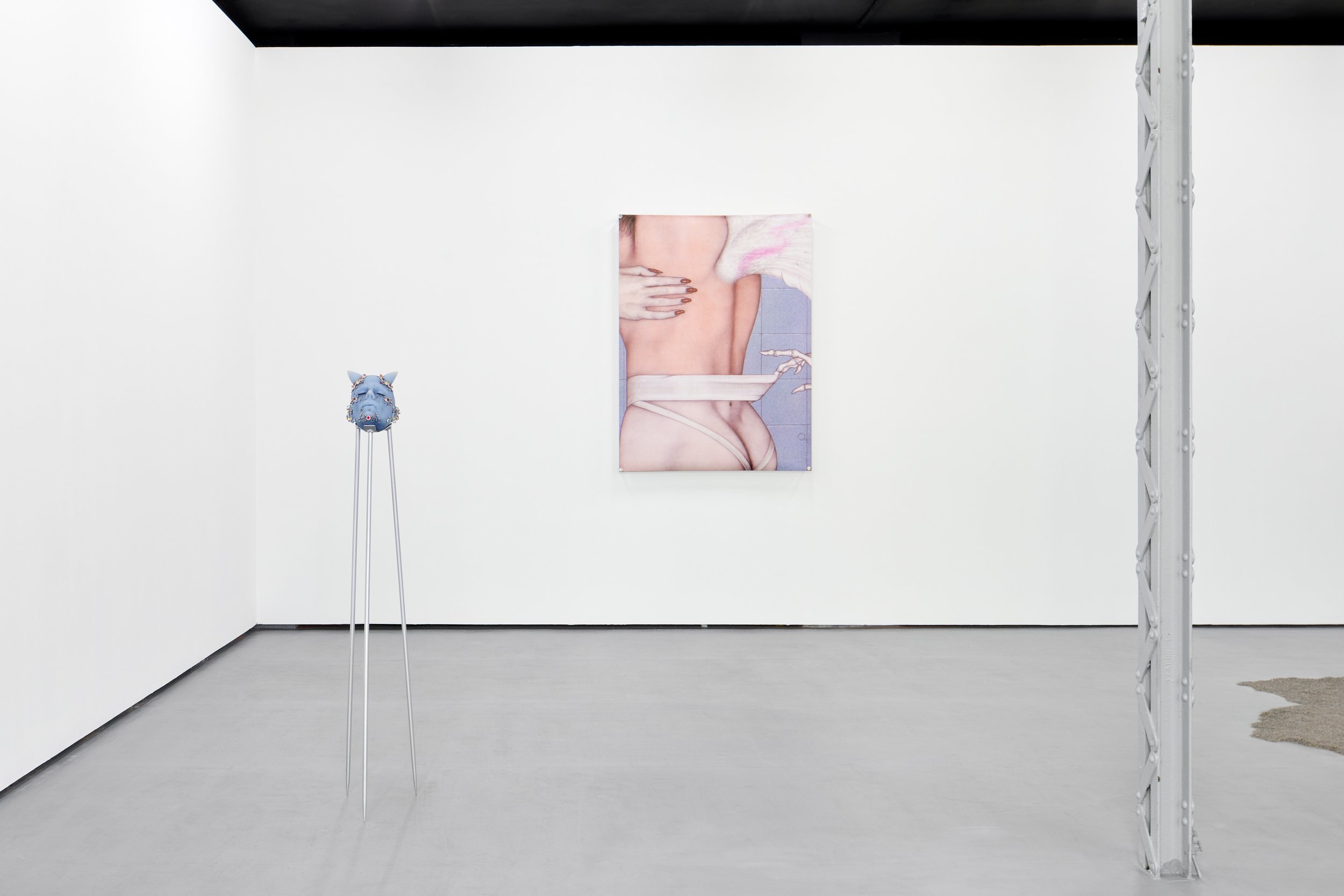
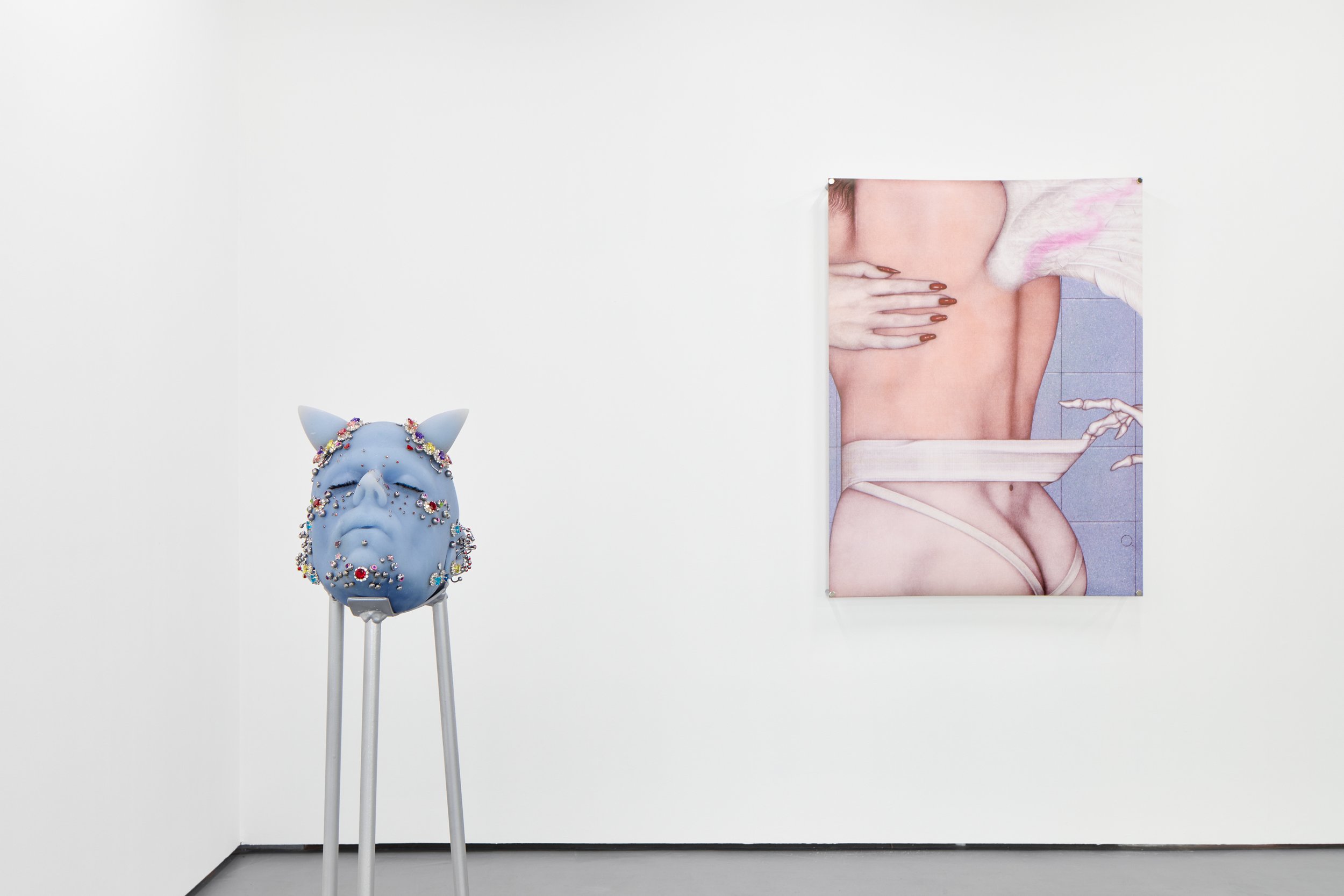
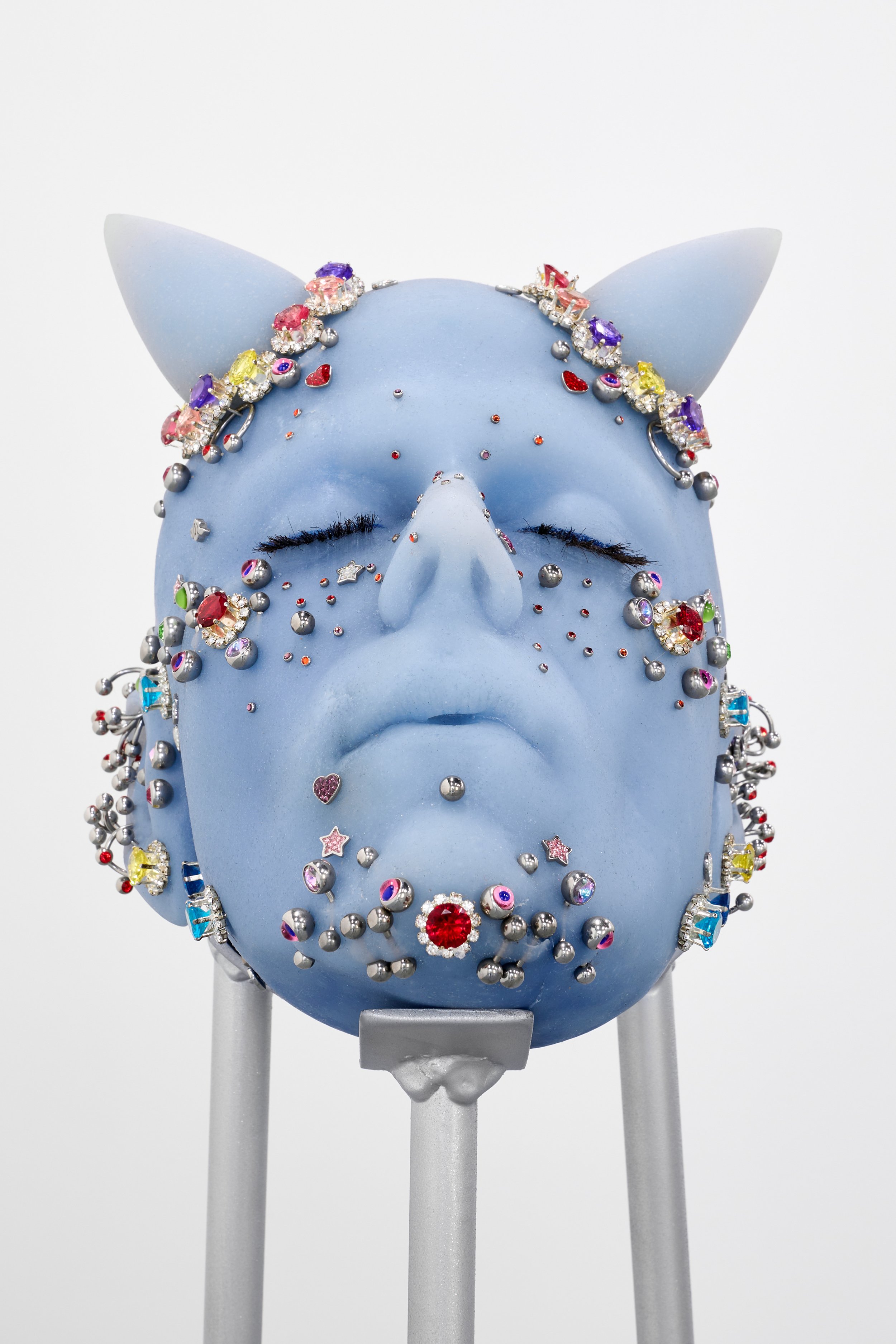
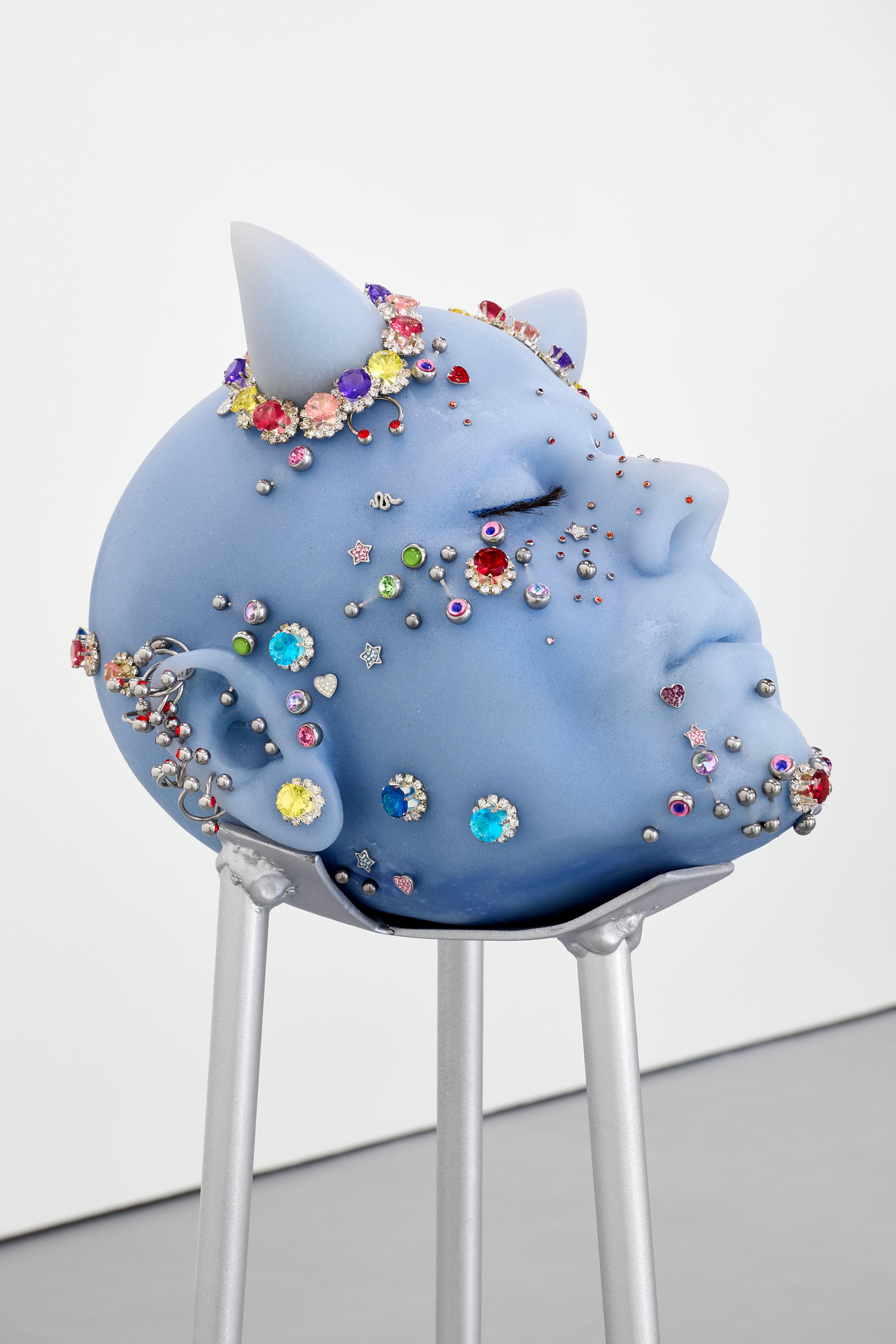
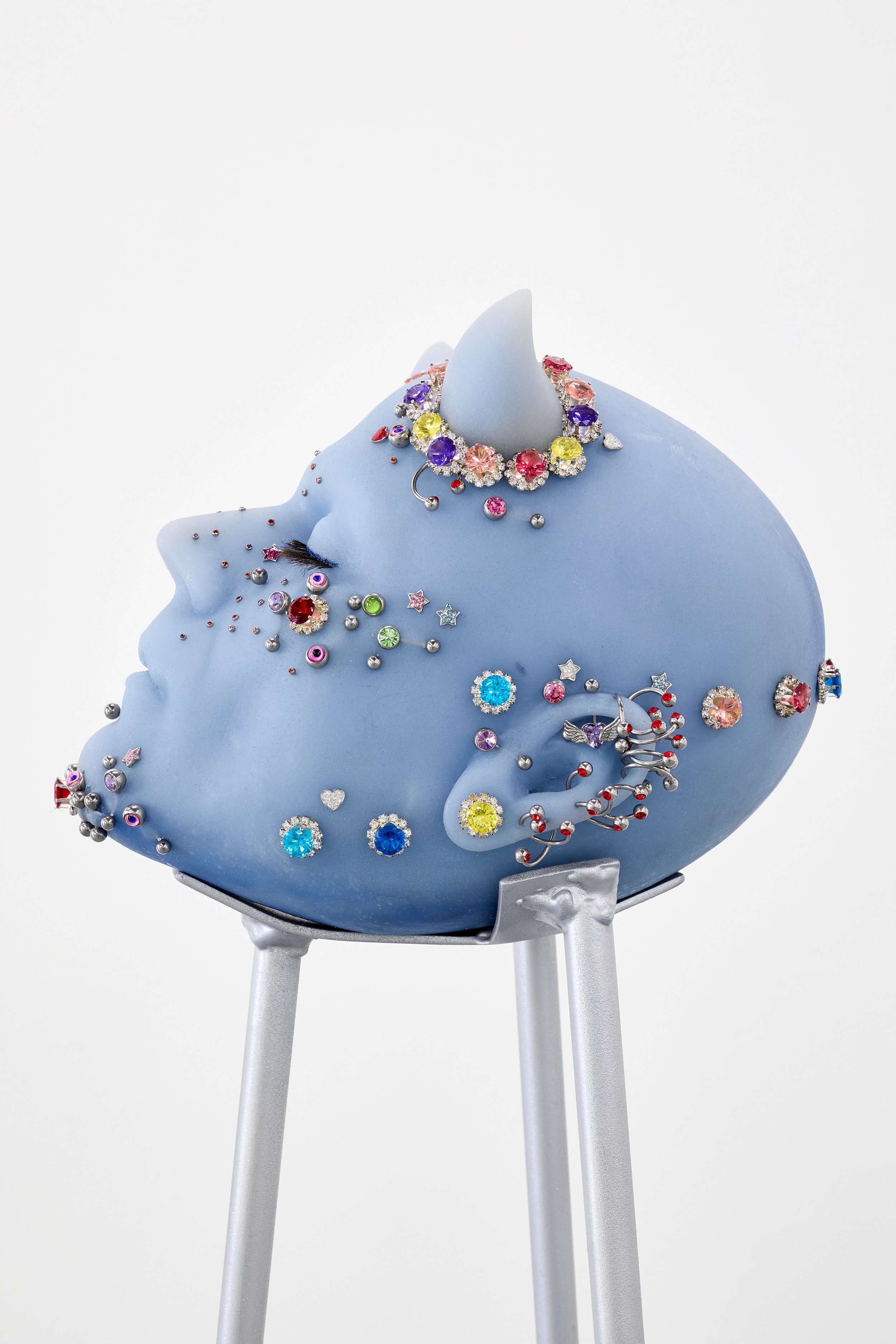

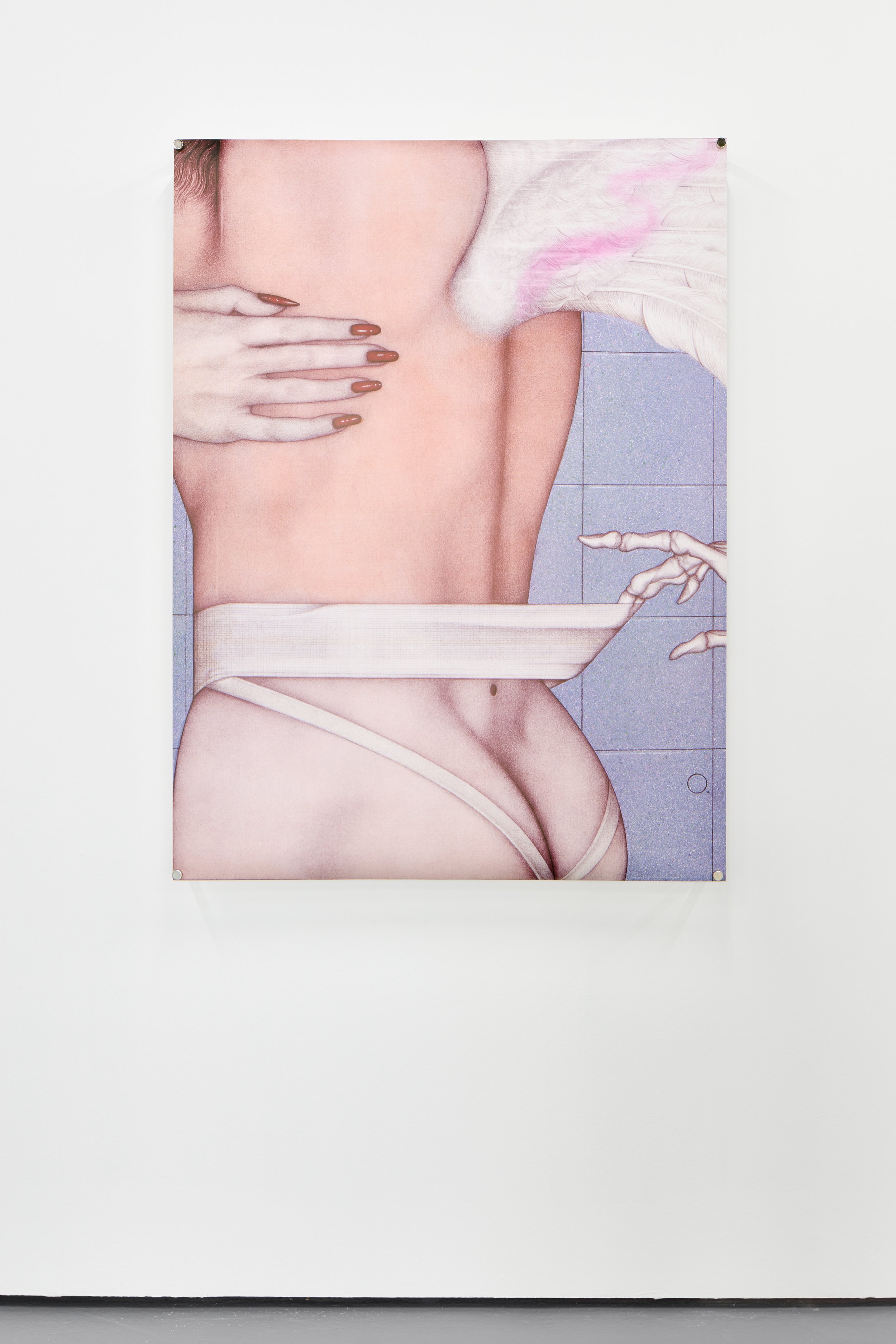
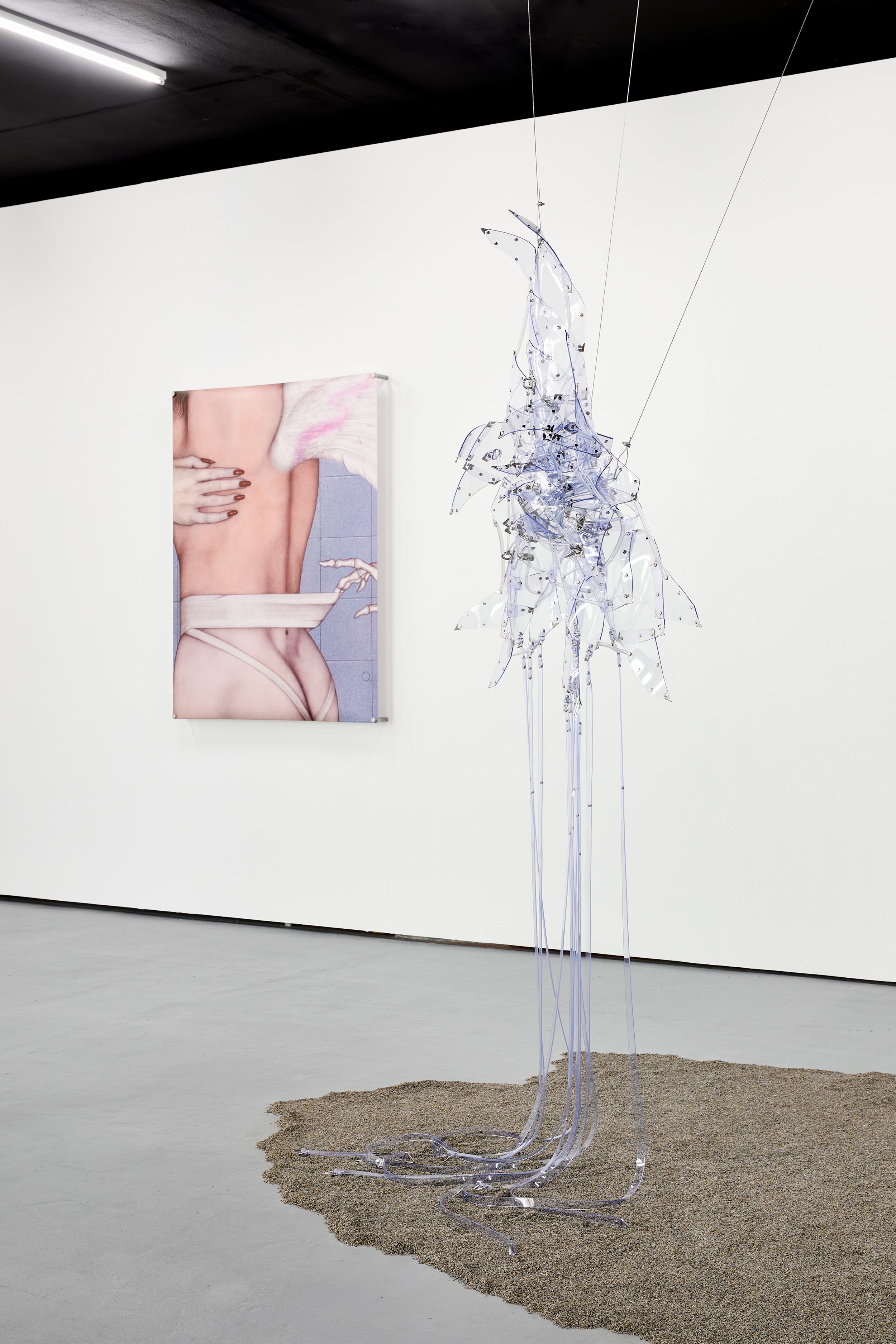
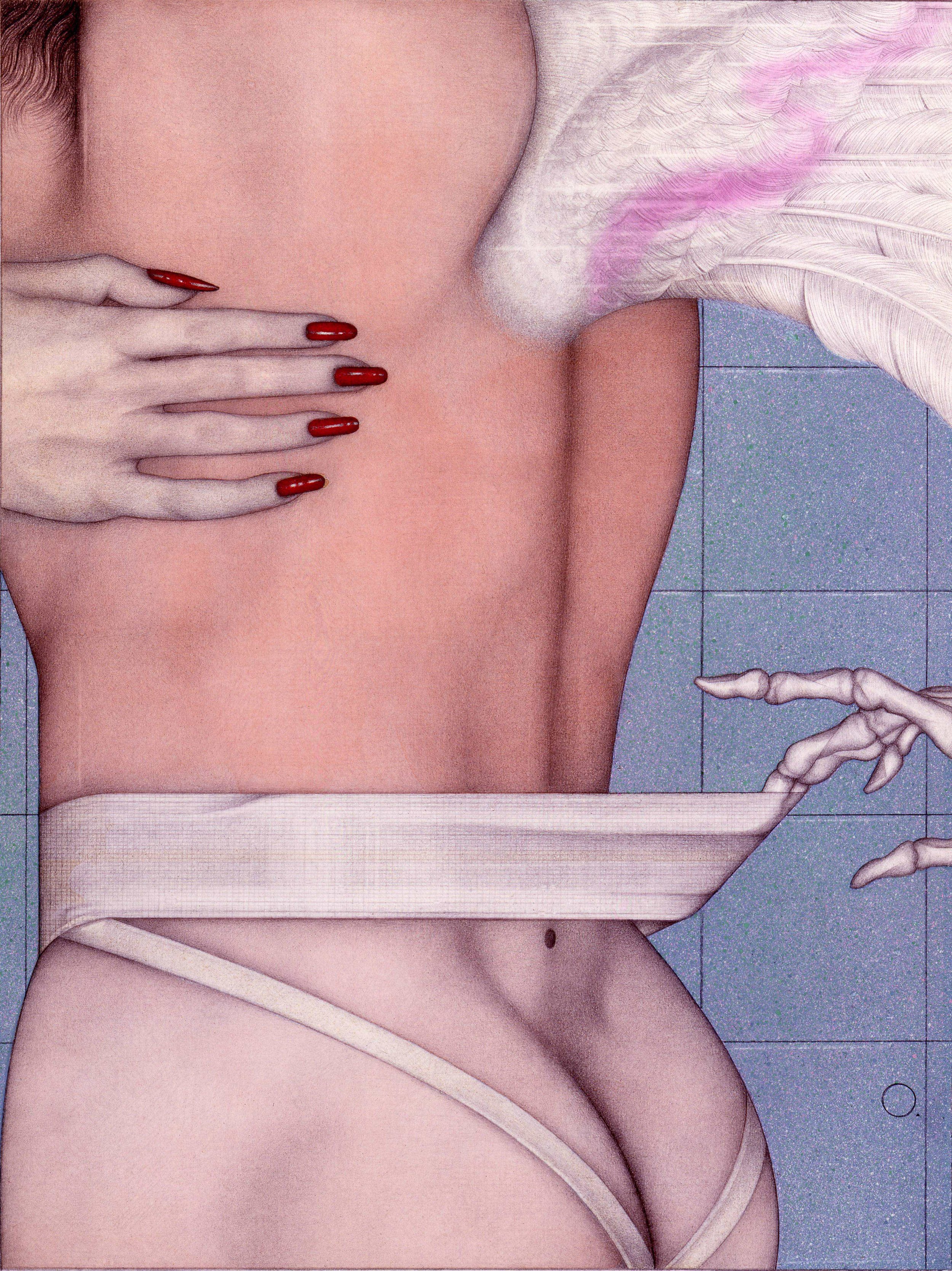
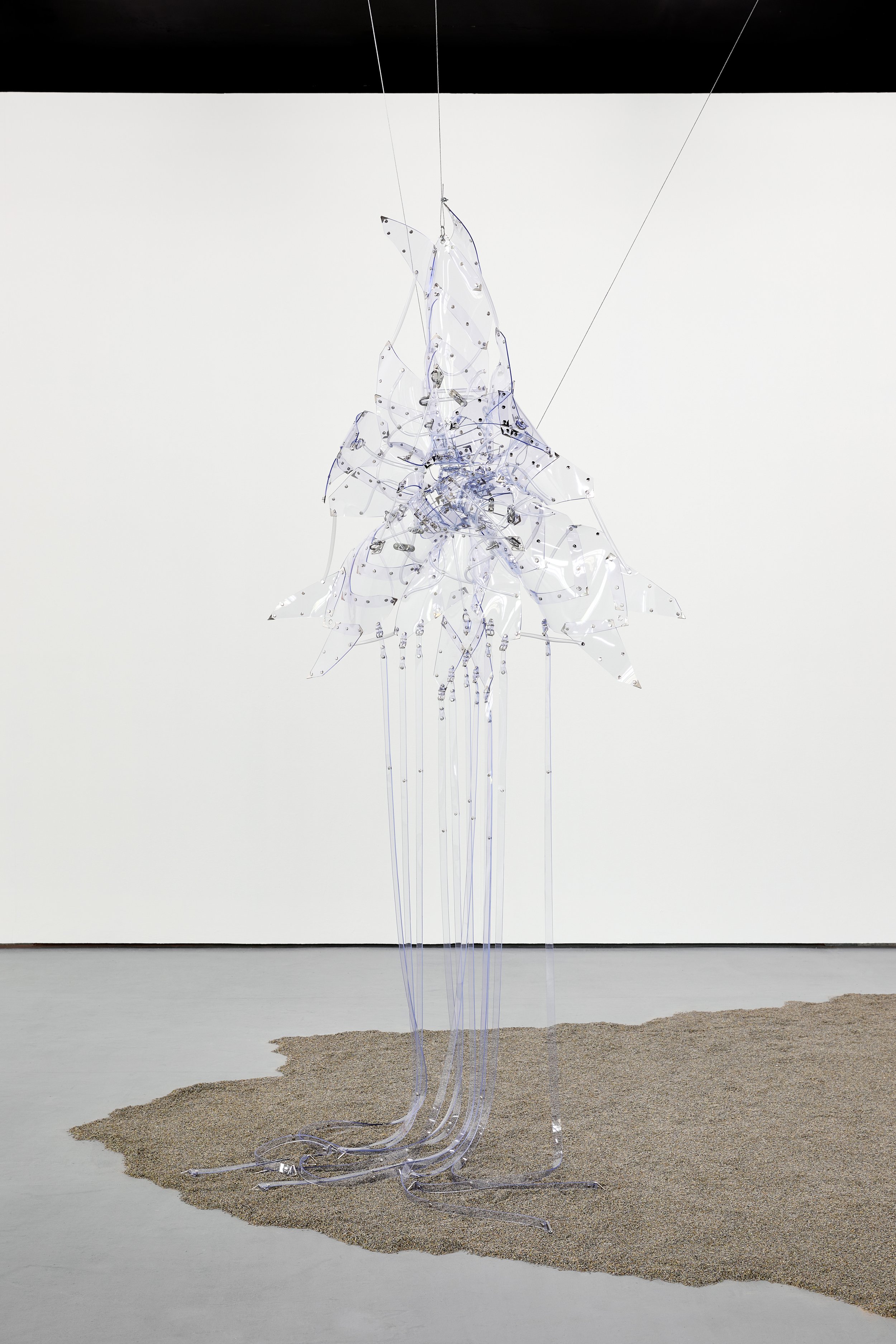
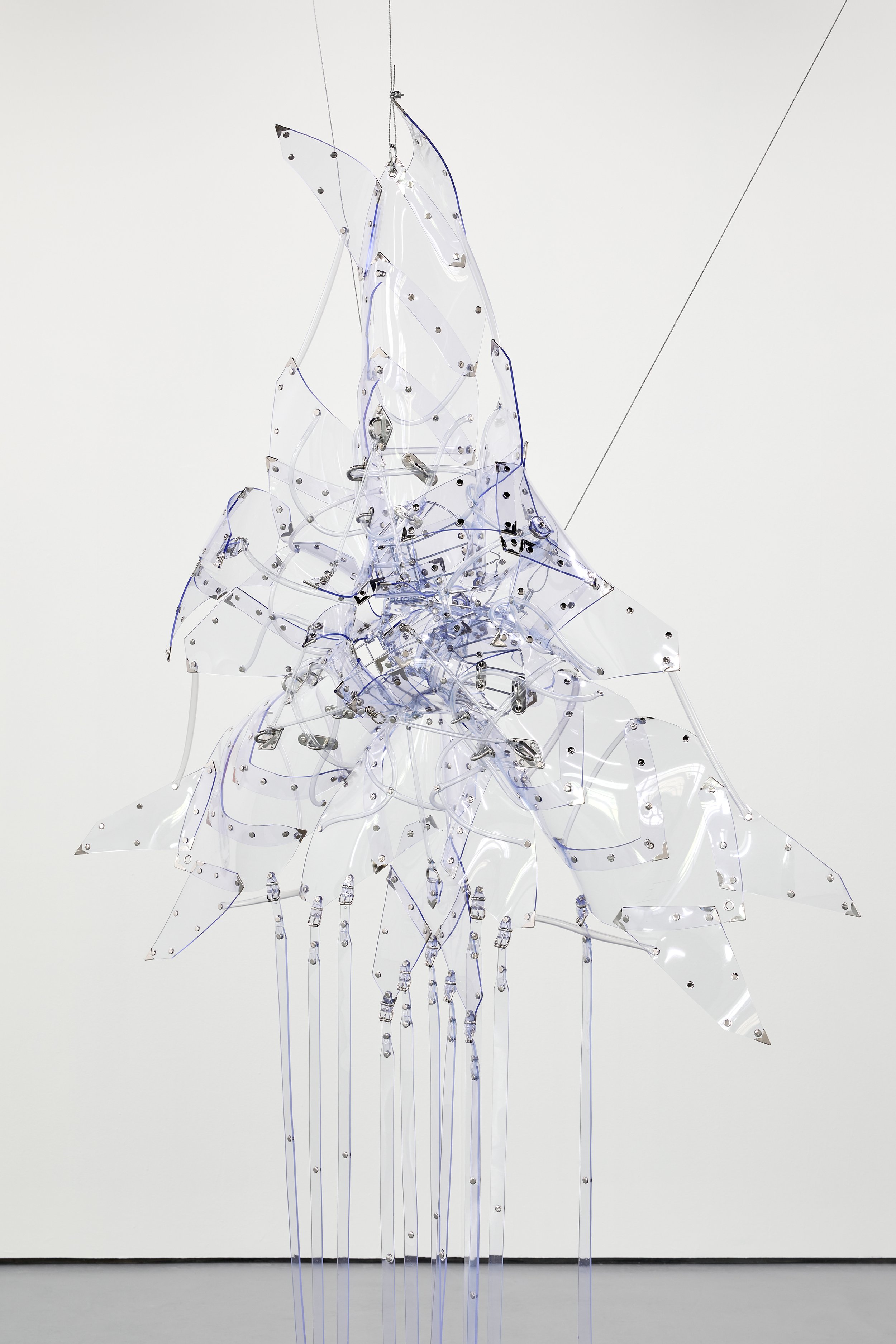
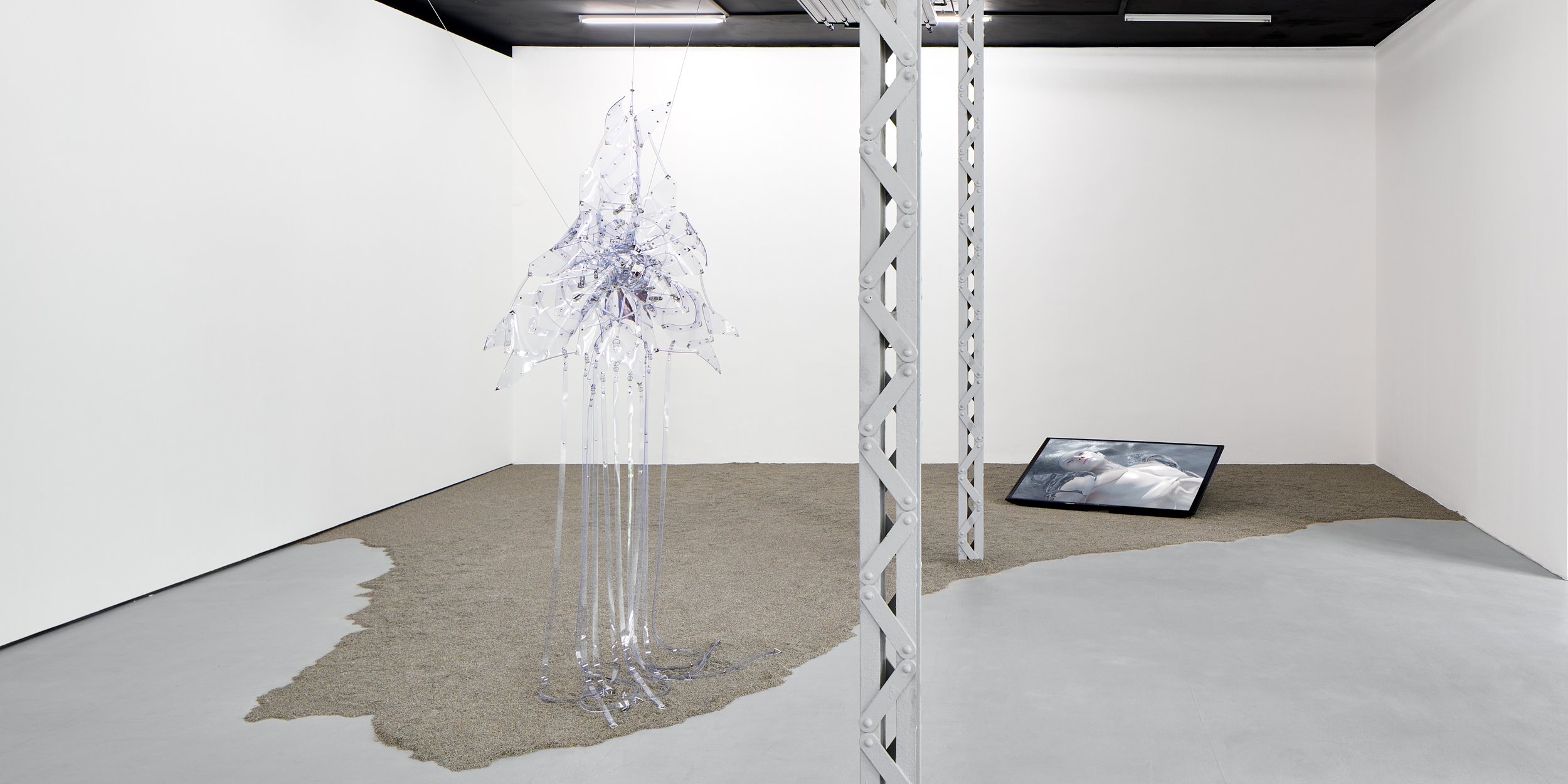
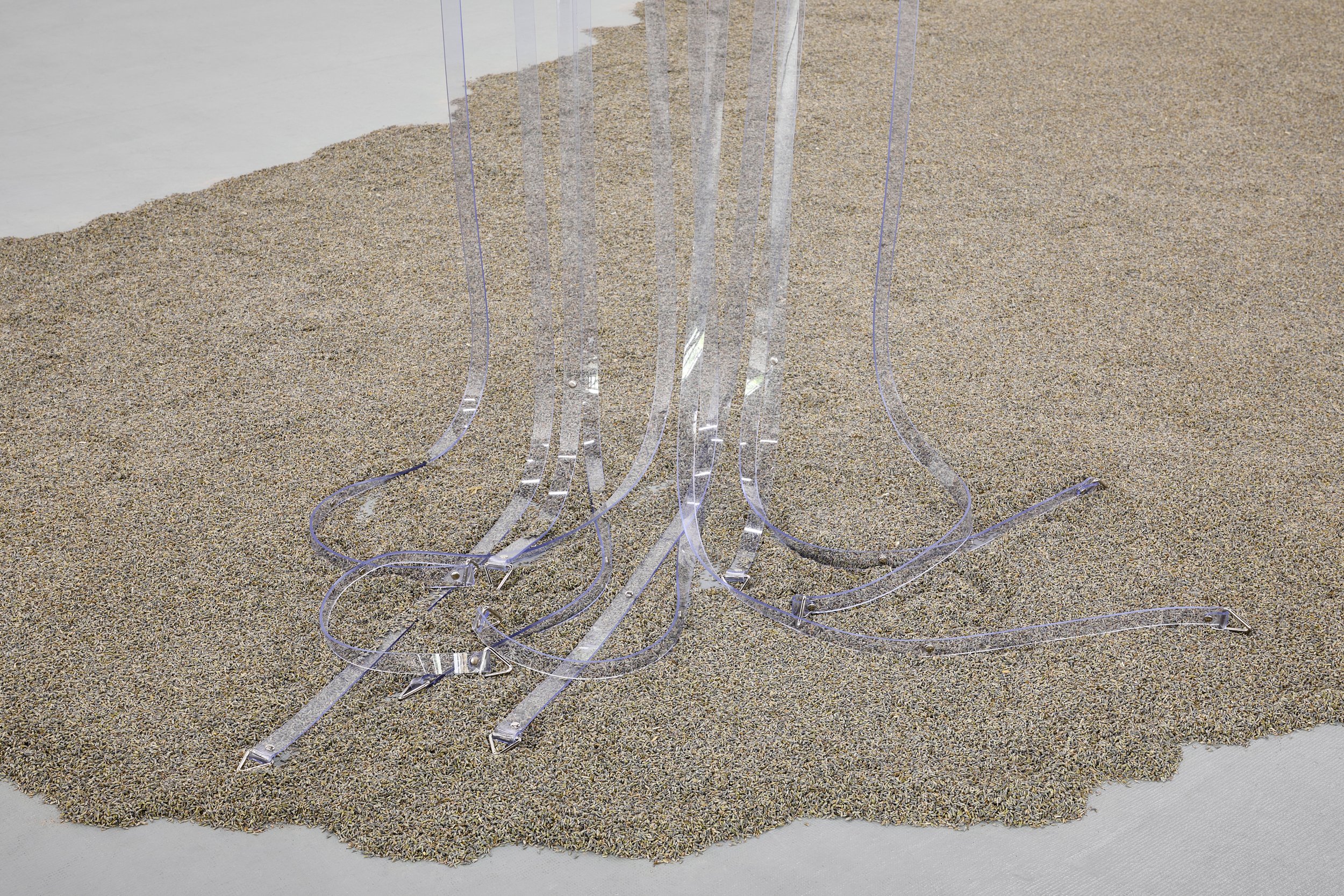
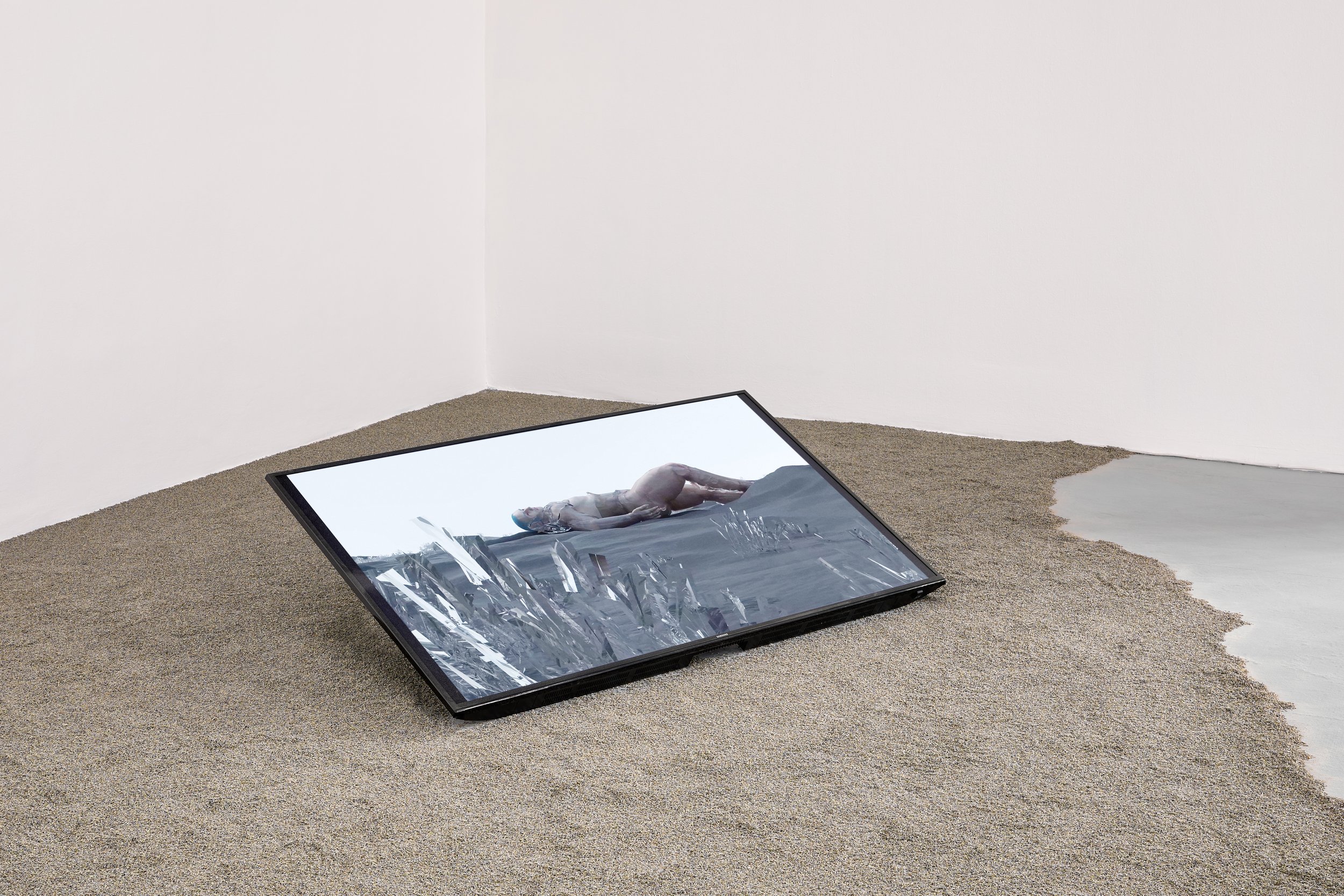
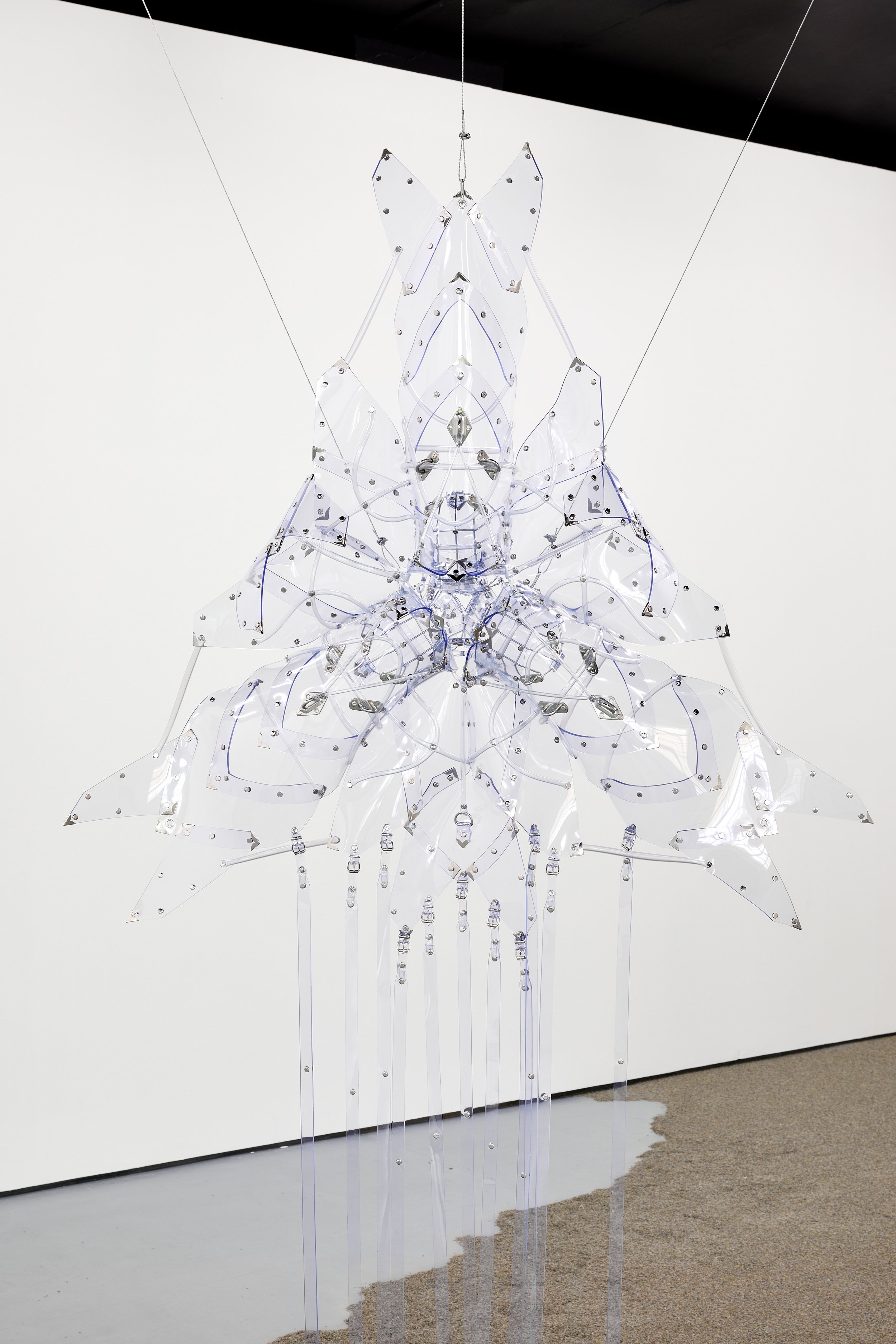
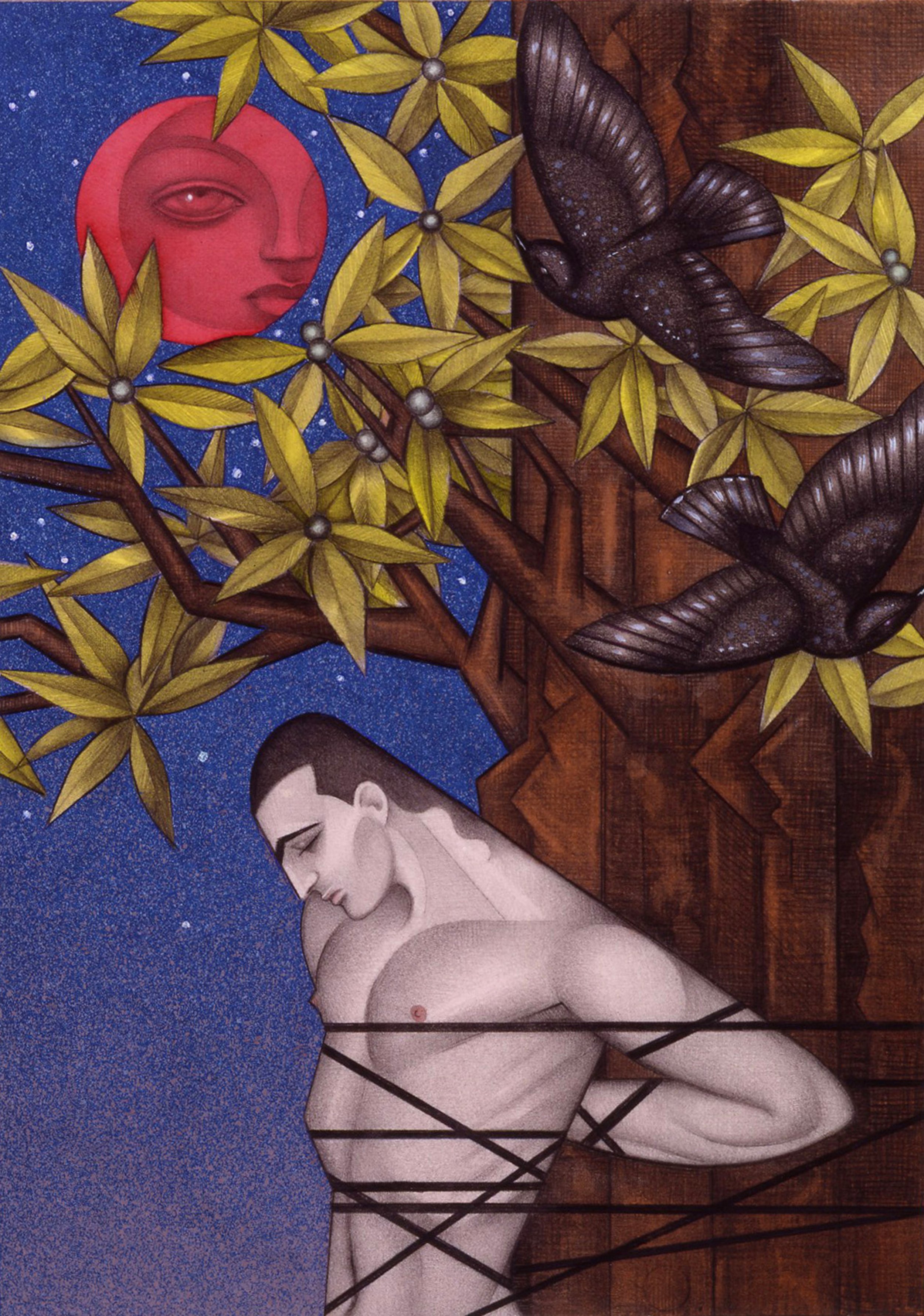
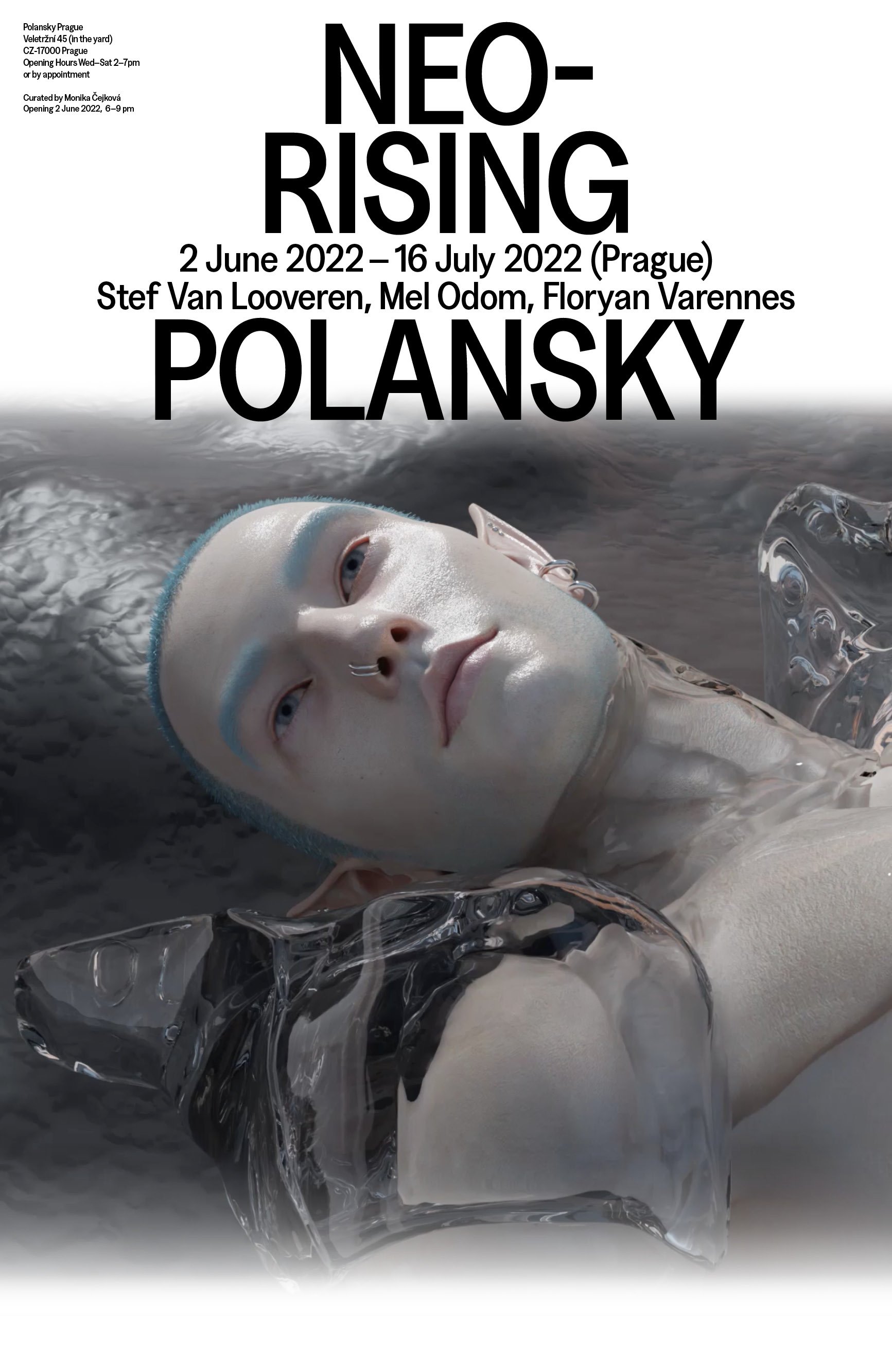
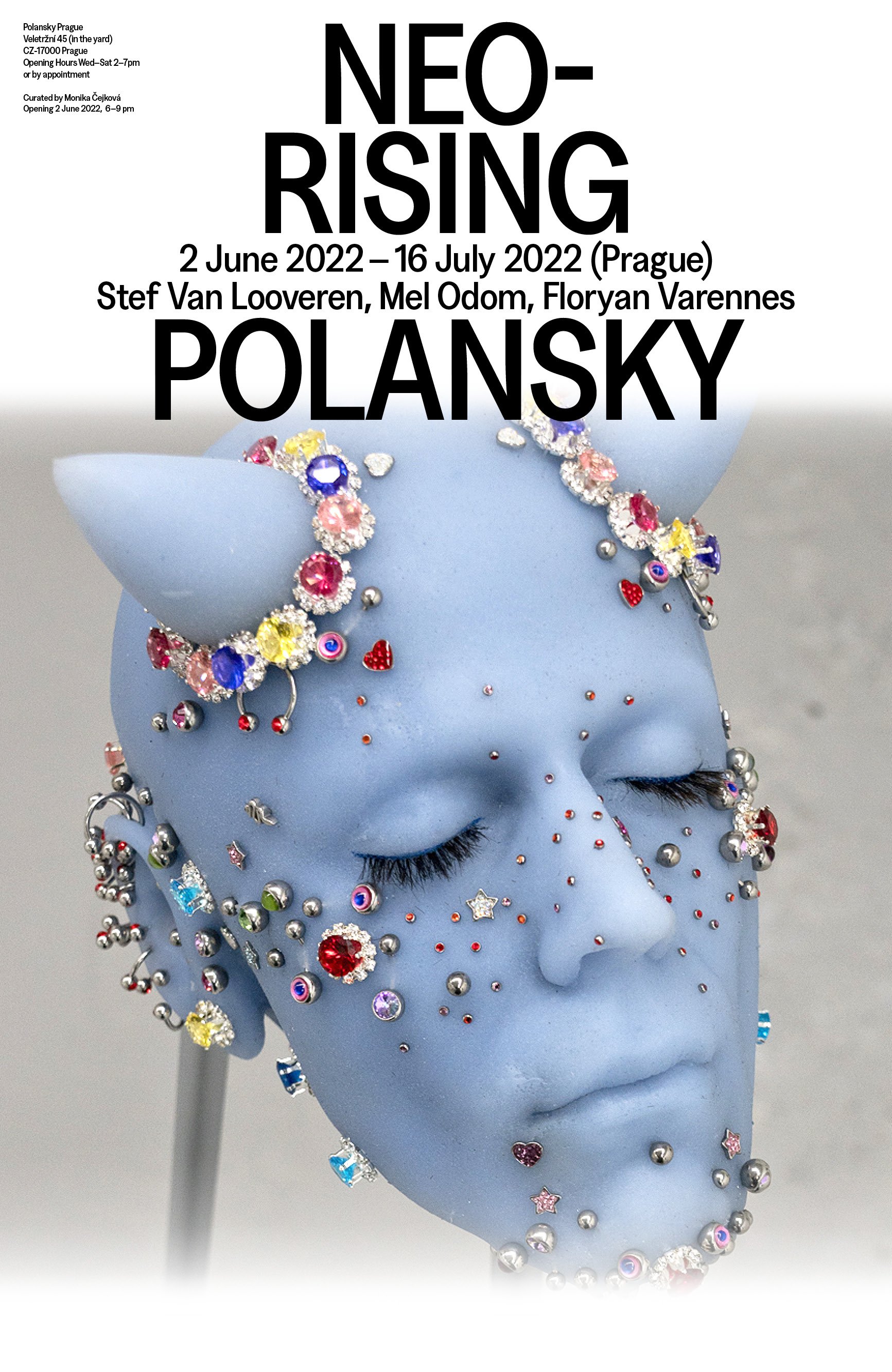
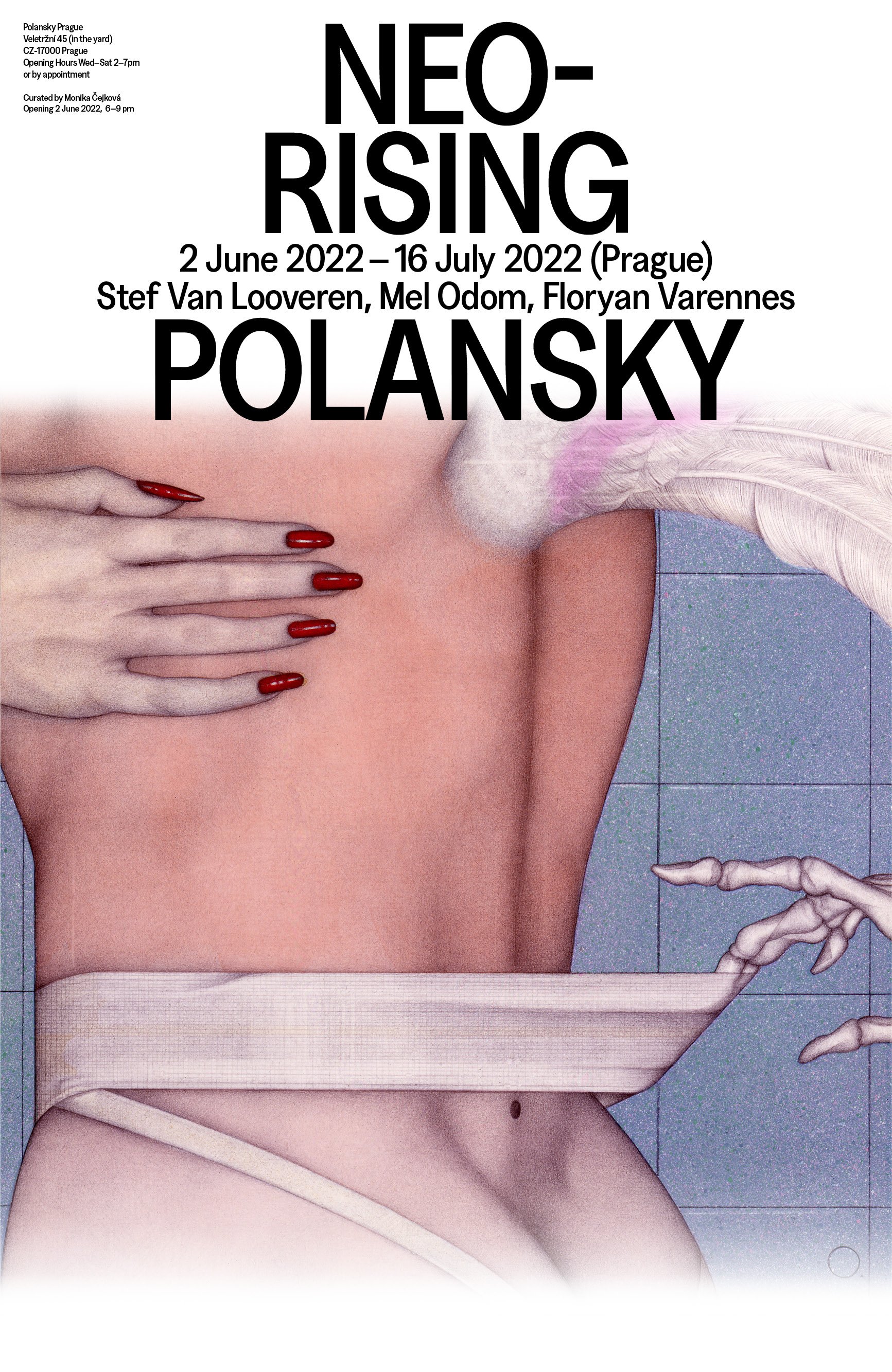
Exhibiting Artists: Stef Van Looveren, Mel Odom, Floryan Varennes
Curator: Monika Čejková
Photos: Jan Kolský
Graphic Design: Anymade Studio
Media: Art&Antiques (review), O Fluxo, Kuba Paris, YYYYMMDD, gallerytalk.net
We are living in a time of the heightened transformation of the human body, the physical transformation into fluid digital matter in all aspects of our lives. We are subjects of embodied fantasies in which we may become somebody completely different – forever, for some time or just for one post.
Neo-rising presents the work of Stef Van Looveren, Mel Odom, Floryan Varennes, which is characterized by tendencies towards themes of romantic love and eroticism, depicted on layers of cyber culture, queer themes and references to the post-gender and post-human world.
Neo-rising is a spin-off of the 2020 exhibition project Fantasy Finery.
Human body
The human body is the physical substance of the human organism, composed of living cells and extracellular materials and organized into tissues, organs, and systems.
source: britannica.com/science/human-body, accessed on 14 February 2022
Cyborg
A hybrid being: half human, half machine (a contraction of ‘cybernetic organism’). The term was first coined in 1960 by the Austrian-American space scientist Manfred Clynes (b.1925), though such creatures had featured in science-fiction since the 1920s and they have long been with us in everyday life in the form of mechanical elements (such as prosthetic limbs) incorporated into the human body.
source: Daniel Chandler, Rod Munday, A Dictionary of Media and Communication, Oxford University Press, 2011
Postgenderism
Postgenderism as a cultural phenomenon has roots in feminism, masculism, along with the androgyny, metrosexual/technosexual and transgender movements. However, it has been through the application of transhumanist philosophy that postgenderists have conceived the potential for actual morphological changes to the members of the human species and how future humans in a postgender society will reproduce. In this sense, it is an offshoot of transhumanism, posthumanism, and futurism.
source: en.wikipedia.org/wiki/Postgenderism, accessed on 25 May 2022
Posthuman
The idea that either the human species is at an evolutionary dead-end, and must incorporate technologies in order to evolve to the ‘next level’, or that we have long ceased to be human, because of our increasingly intimate relationships with nonhumans, such as technological artefacts. source: David Bell, Cyberculture Theorists, Manuel Castells and Donna Haraway, Routledge New York, 2007
Fantasy Finery
Fantasy Finery was an exhibition held at Berlínskej model, Prague, in 2020. The exhibition was inspired by the Westworld television series and by sophisticated sexual technologies powered by AI. It broadened the horizons of pleasure, developed intimate relationships and set desires within digisexuality.
Stef Van Looveren (1992, Antwerp) is an Antwerp-based multidisciplinary non-binary artist. Van Looveren’s practice translates itself into video installations, photography, sculpture and performances, in all of which they explore human behaviour within the context of questions of gender. Their works are explicitly erotic, daring and radical, with references to BDSM culture. Their objects, which resemble props or souvenirs from performances, exist on the boundary of everyday items, though they are used materials or are raised to the level of exclusive goods from another world.
Mel Odom (1957, Richmond, Virginia) is an American artist based in New York. In the 1970s and 1980s, Odom became well-known for his Art Deco-style drawings and illustrations, often with erotic imagery. Mel’s work has appeared on the covers of many books and in a wide variety of magazines, including Time, Omni, The New York Times Magazine, Rolling Stone, Blue Boy and Playboy. In 1991, Odom designed the Gene Marshall doll featuring the sensual glamor of the Film Noir era. After being launched in 1996, the Gene Marshall doll became much-prized among collectors.
Floryan Varennes (1988, La Rochelle) lives in Paris and Toulon. At the centre of his multimedia art is a profound interest in medieval art, from which he draws a significant number of his theoretical, historical and symbolic references. References to the Middle Ages are intertwined with contemporary motifs such as queer themes, queer technologies and cyberspace.
